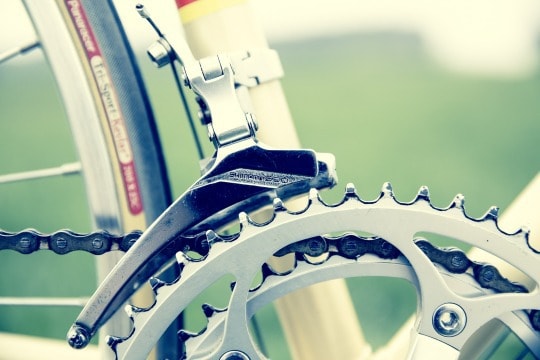
Unlike traditional cars, bicycles give off exactly zero greenhouse gasses during use. But how many people actually know how to repair one when something goes wrong? If you are a bike owner or frequent rider, there are some basic problems you should know how to fix.
- Q: How do I change a tire?
A: Begin by removing the wheel from the frame. Most bikes have a lever that tightens and loosens to fasten the wheel in place. Deflate the rubber tube and remove from the wheel frame. Put the deflated new tube on the wheel frame, and inflate using a pump, easily found in bike shops and online. Reattach the wheel in the same manner you removed it, and you are set to ride! - Q: The chain came off from the gear! How can I fix it?
A: Place a link in the chain on the front gear and slowly turn the pedal to allow more links to attach to the gear while it turns. Once secure on the front, do the same on the back gear. - Q: I want to adjust my seat but it won’t move.
A: First, make sure the bolt that tightens and loosens around the seat post is in the loose position. If that doesn’t work, find some bike oil or WD-40 (an all purpose outdoor lubricant) and grease down the post. Find your strongest friend, and pull!
Even if you don’t own a bike, it’s good to have basic knowledge. If you want to start riding more often, Pittsburgh has implemented the Healthy Ride bike share system, with over thirty stations, including a station right next to Carnegie Museum of Natural History! Also check out Bike Pittsburgh for more resources.
This year, we are sharing simple tips and tricks for greener living in tandem with our exhibition We Are Nature: Living in the Anthropocene, which explores the interconnected relationship between humans and our environment. A first of its kind in North America, the exhibition utilizes interactive exhibits, innovative gallery design, and specimens from our hidden collection in an unflinching exploration of the Anthropocene.
The Anthropocene is the current geological era in which humans are making a profound impact on the geological strata. While the term itself is still being debated by geologists, the museum is embracing it as a social and cultural tool for exploring the broad sum effect humans are having on the planet.
